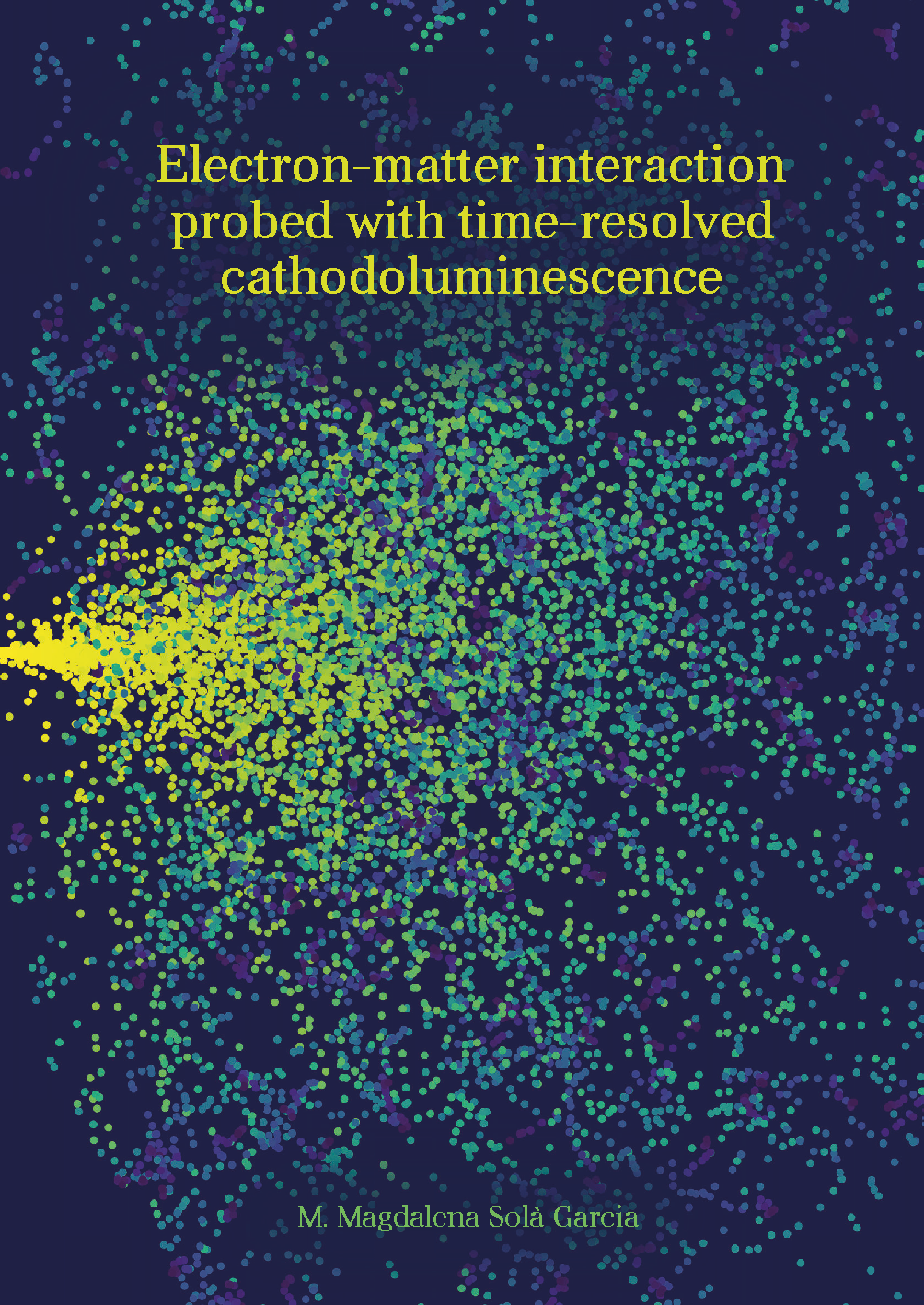Electron-matter interaction probed with time-resolved cathodoluminescence
Ultrafast electron microscopy is a powerful technique to study material dynamics at the nanoscale. In particular, cathodoluminescence (CL) microscopy, which relies on the analysis of the light emitted by a material when excited with a high-energy electron, allows us to study optical properties with nanometer spatial resolution. In this thesis we investigate the dynamics of high-energy (1-30 keV) electron interaction with matter using pump-probe cathodoluminescence microscopy (PP-CL). PP-CL is a novel technique that relies on the synchronized excitation of a sample with electron and light pulses, in a timescale only limited by the electron pulse duration (≤ ps). In the first part of the thesis, we present the design, implementation and characterization of the PP-CL setup, which is based on a modified scanning electron microscope. We discuss the photogeneration of electron pulses upon excitation of the electron cathode with fs laser pulses and we revise the differences between excitation of matter with light and electrons. In contrast to previous works, our PP-CL setup enables the use of the electron as a pump and the light as a probe, thus allowing us to directly track the changes induced by the electron on the sample. In the second part of the thesis, we exploit this capability of our PP-CL setup, together with second-order autocorrelation measurements of the CL emission, to study the dynamics of electron-matter interaction in diamond nitrogen-vacancy centers and InGaN/GaN quantum wells. Overall, this thesis provides new insights into the dynamics of electron-matter interaction through the development of PP-CL, thus bringing new capabilities to electron microscopes.



